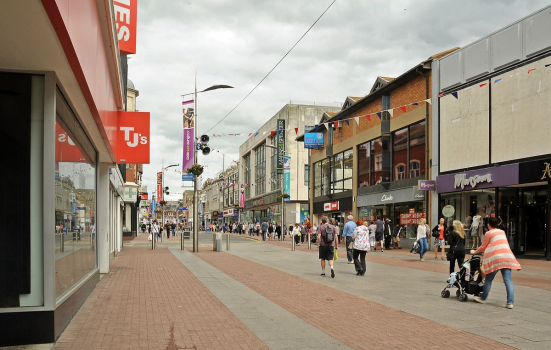ACE says there is "more to be done on both sides" to bolster culture's role in town centres.

Beata May
The cultural sector can play a major role in rejuvenating high streets, bringing vibrancy, resilience and diversity to pandemic-hit town centres.
The assertion comes from a report, joint funded by the South East Local Enterprise Partnership (SELEP) and Arts Council England, that says creativity should be "at the heart of high street transformation".
With a focus on Kent, Essex and South Sussex, the report warns the decline of the traditional high street has been hastened by increased online shopping during Covid.
READ MORE:
Arts and culture are key to transitioning high streets, which cannot continue to rely on retail, into a visitor experience rather than a place to shop.
SELEP said town centre space must be used more effectively: "The creative and cultural sector is pivotal to this in responding to both the greater need and more opportunities."
ACE South East Area Director Hazel Edwards said the report is “a call to action in both directions: to the creative sector, and also to high street stakeholders”.
“We think more can be done on both sides to realise the value that culture and creativity can bring to high streets."
Clear opportunities
Edwards said the cultural sector's role in reviving high streets lies in "pursuing and grabbing the opportunities that clearly exist".
According to the report, 75% of ACE-funded infrastructure is 500m from a high street. Across the South East, projects like Folkestone Creative Quarter, TOMA Project Space in Southend-on-Sea, and the Basildon is ON cultural placemaking initiative are generating footfall.
Perhaps more importantly, they are engaging communities through culture, "driving that vital sense of civic pride in where they live, work and play", Edwards said.
Though 4,600 creative businesses in the South East are located within 200m of a high street only 10% of high street businesses work within the creative or culture sector.
Data from SELEP paints a positive picture for the future, however: 18% of high street start-ups in 2020 self-identified as ‘creative’.
Turning empty retail spaces into cultural ones is crucial, but it must be part of a longer term strategy of “partnerships and collaboration”, the report said.
“For stakeholders like landlords and councils, that means making 'space at the table’ for creative practitioners as they consider the future of their high streets," Edwards added.
New reality
The report concludes South East high streets "will have to be reconfigured to respond to a new reality and a different use of space”.
Changing relationships between stakeholders - businesses, landowners, public sector organisations, charities and communities - must focus on local issues rather than "more traditional models based on bottom-line and profit-only criteria.”
While the report only considers case studies from the South East, Edwards said there is scope for its suggestions to be applied more widely.
It will hopefully be "a source of inspiration" to the creative sector and high-street stakeholders, she said.




